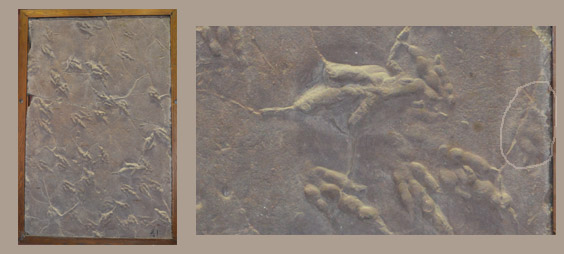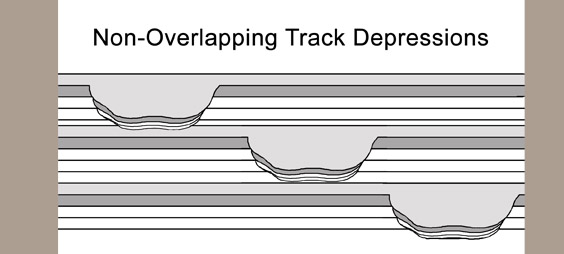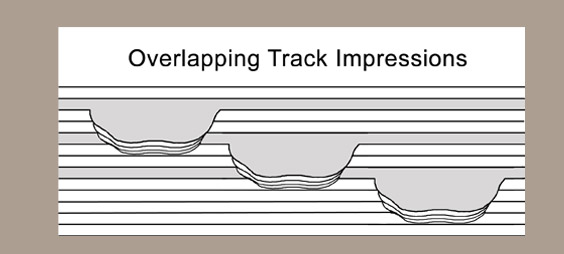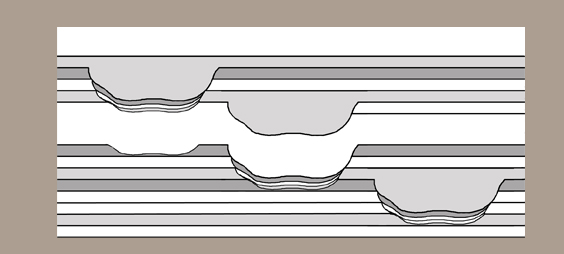More Global Flood Evidence In Dinosaur Tracks:

The above shows a plate (stone slab) with dinosaur tracks that is considered to be one of the best in the world. It is on exhibit in the Berneski Museum at Amherst College, and we have a copy of this plate in our museum. It contains a large number of extremely high quality gralltaor dinosaur tracks. They are so high quality that these tracks are used to as the standard to define grallator tracks. But not every track on this plate is high quality. Some of the tracks are not as deep, have less detail, and are fainter. One of those is circled in a close-up view of part of the plate above. There is another faint partial print near the center of the image.
What Are These Faint Tracks?
One possibility, presented by those who believe these tracks were preserved by annual floods, is that the fainter tracks were made as the mud dried and hardened. As the mud became firmer, the dinosaur's foot would not sink as deep into the mud. If the tracks were buried by a single, annual flood, that's the only option for explaining these fainter tracks.
But...
It is an accepted fact that a dinosaur's foot distorts the layers of sediment beneath the surface. These are called underprints. Also, as a footprint is filled with sediment layers, an impression above the actual place the dinosaur's foot touched is created. This is called an overprint. Both underprints and overprints preserve a less deep, less detailed, fainter impression of the footprint.
If fossilized dinosaur footprints were made during a global flood, there would be rapidly varying conditions. The local water level did not rise steadily such as you see when filling a bath tub (see the page on BEDS) . There were tides, and tsunamis, and tsunamis on top of tsunamis. The water level locally would be going up and down, all the while continually building up. So there would be times when there was mud exposed to the air. Times when the water was shallow. And there would be times when the water was deeper. Until finally the overall water level rose to a point such that the land remained underwater. It was a dynamic situation.
How did this effect the build up of sediment?


